Monaco and Nice met in the first Derby de la Côte d’Azur of the season, at the famed Stade Louis II. The home side had yet to win a match in what was beginning to look like yet another tumultuous year after barely staving off relegation last season. The loss of a number of breakout players a couple summers prior has been followed up with Monaco struggling to replace the missing pieces effectively. Nice meanwhile were looking to maintain a spot near the top of the Ligue 1 table, have collected 12 points in their first six matches.
This tactical analysis will examine the fluctuating yet efficient tactics Monaco utilised to take a coveted three points in this fierce, physical rivalry match.
Lineups
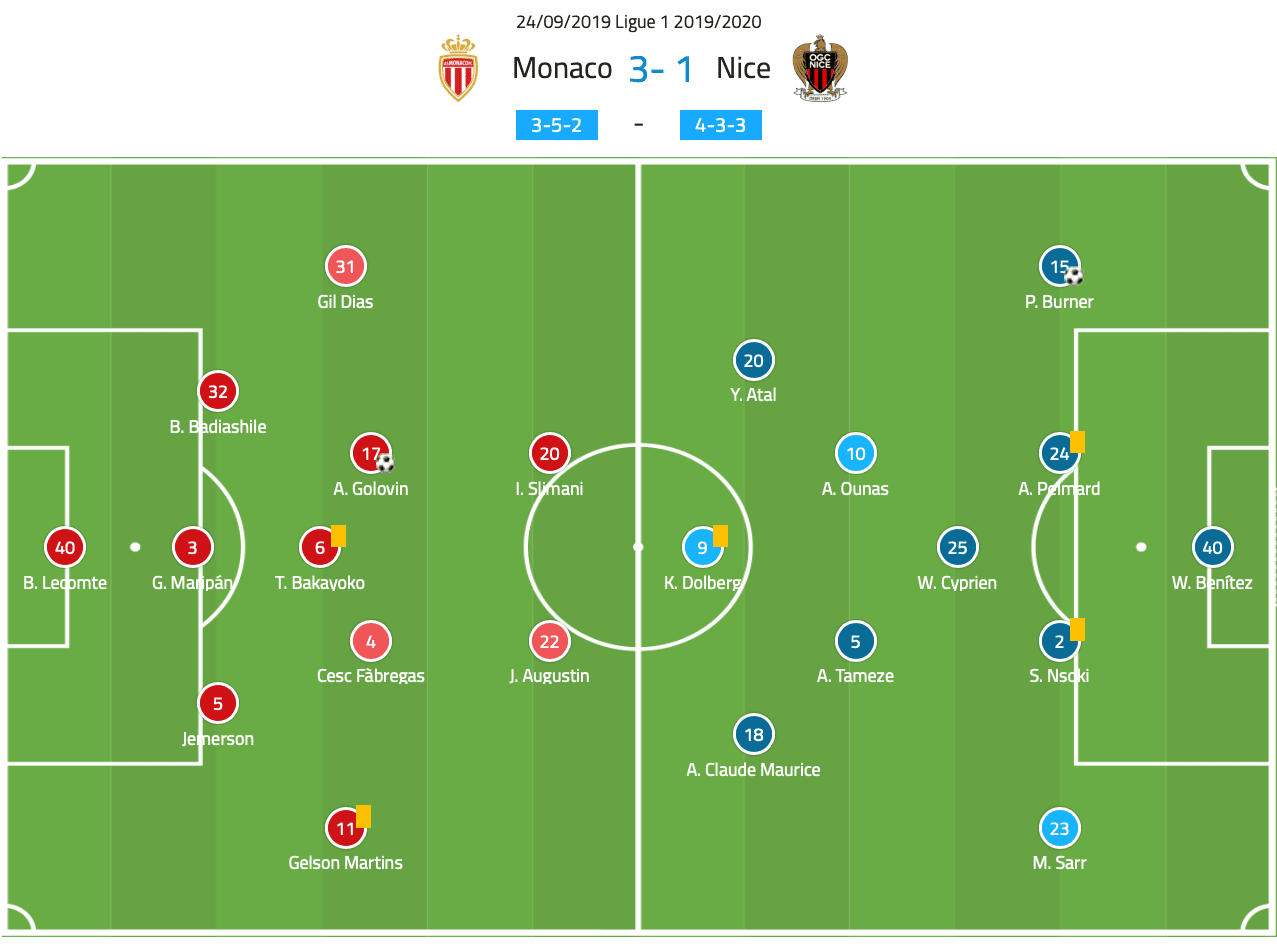
Leonardo Jardim opted for his squad to play in a back three/back five formation. Jemerson and Guillermo Maripán completed the back line alongside Benoît Badiashile, as Kamil Glik was taken out of the starting eleven following a string of poor performances. A number of other usual starters, such as Fodé Ballo-Touré, Adrien Silva, and Wissam Ben Yedder, also began the match on the bench. Islam Slimani, who has seen a rise in form at his new club with three goals in three matches, started as the primary striker.
Patrick Vieira’s side ran out in primarily an attacking 4-3-3 formation with a flexible midfield. Malang Sarr began at left-back for his first start since matchday one. Central midfielder Wylan Cyprien and wide attacker Adam Ounas controlled possession in the middle third of the pitch. Youcef Atal and Kasper Dolberg started as part of the front three after both scored in Nice’s last match against Dijon.
Monaco’s initial press
Monaco began the match with a front line press. The front two attackers Slimani and Jean-Kévin Augustin along with the next line pressed Nice’s back line and midfield effectively.
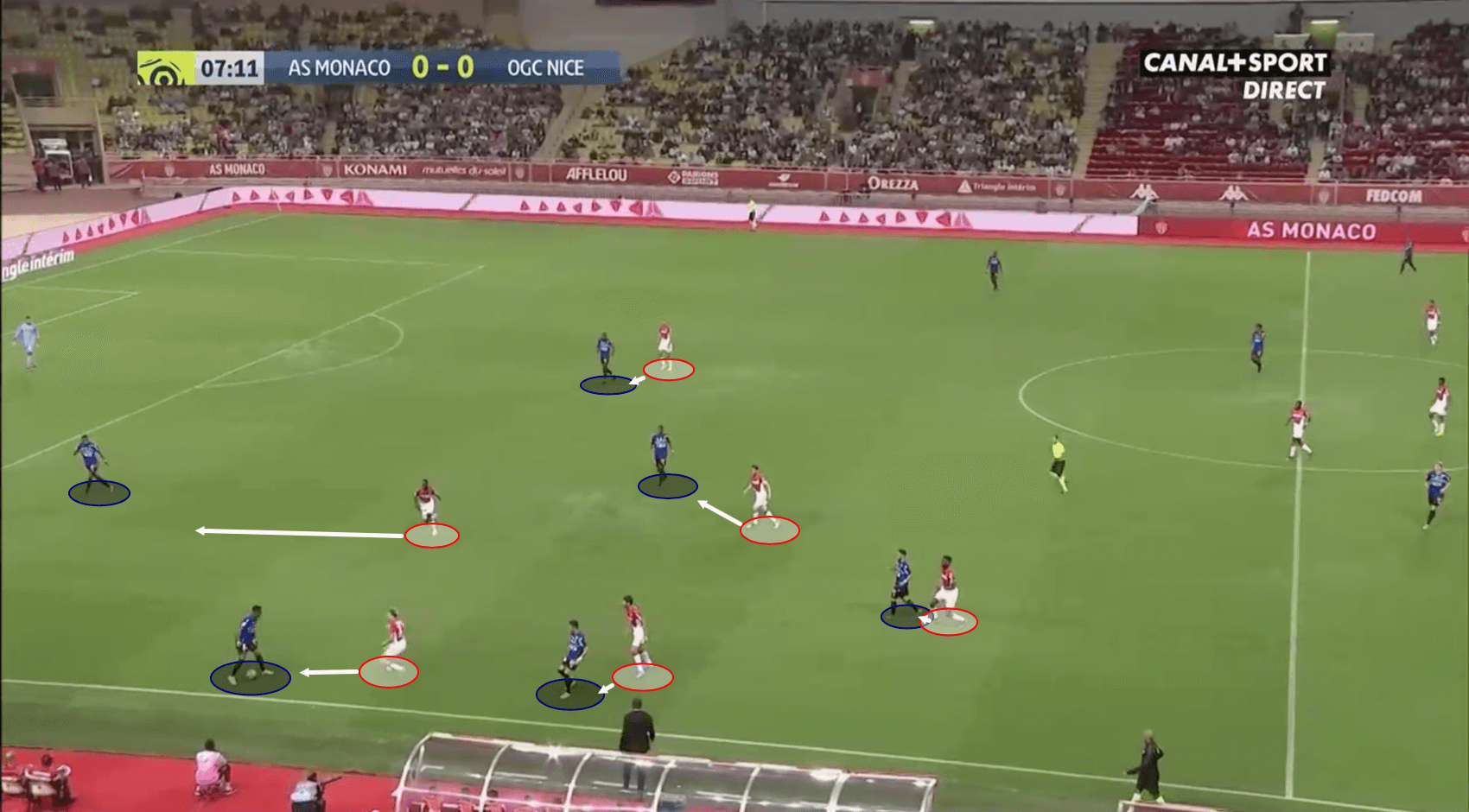
These presses worked well in suffocating Nice’s possession, which severely limited their ability to progress the ball. As a result, Nice were often limited to back-passes or long balls forward. This was an ineffective mode of attack even when the connection was successful. Upon receiving the long ball, Nice’s attacker would often hold the ball too long before continuing ball progression which allowed Monaco’s defensive line to organise.
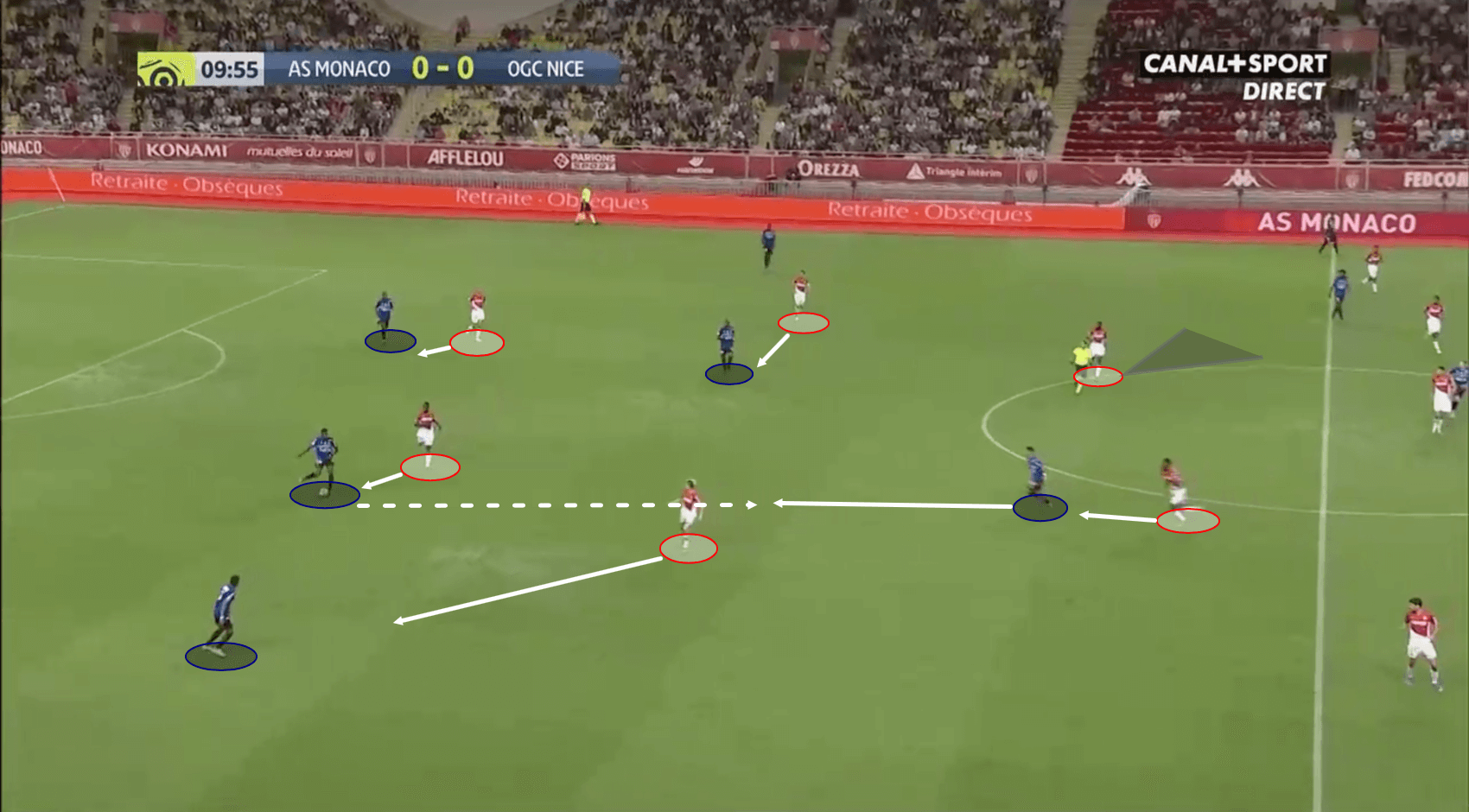
Monaco’s press, in addition to forcing long balls, also forced Nice’s midfield to drop deeper into their own half to receive the ball, leaving too far a distance for the receiving midfielder to make any sensible ground pass to the forward players. Frequently, this led to erroneous passes on Nice’s buildup attempts.
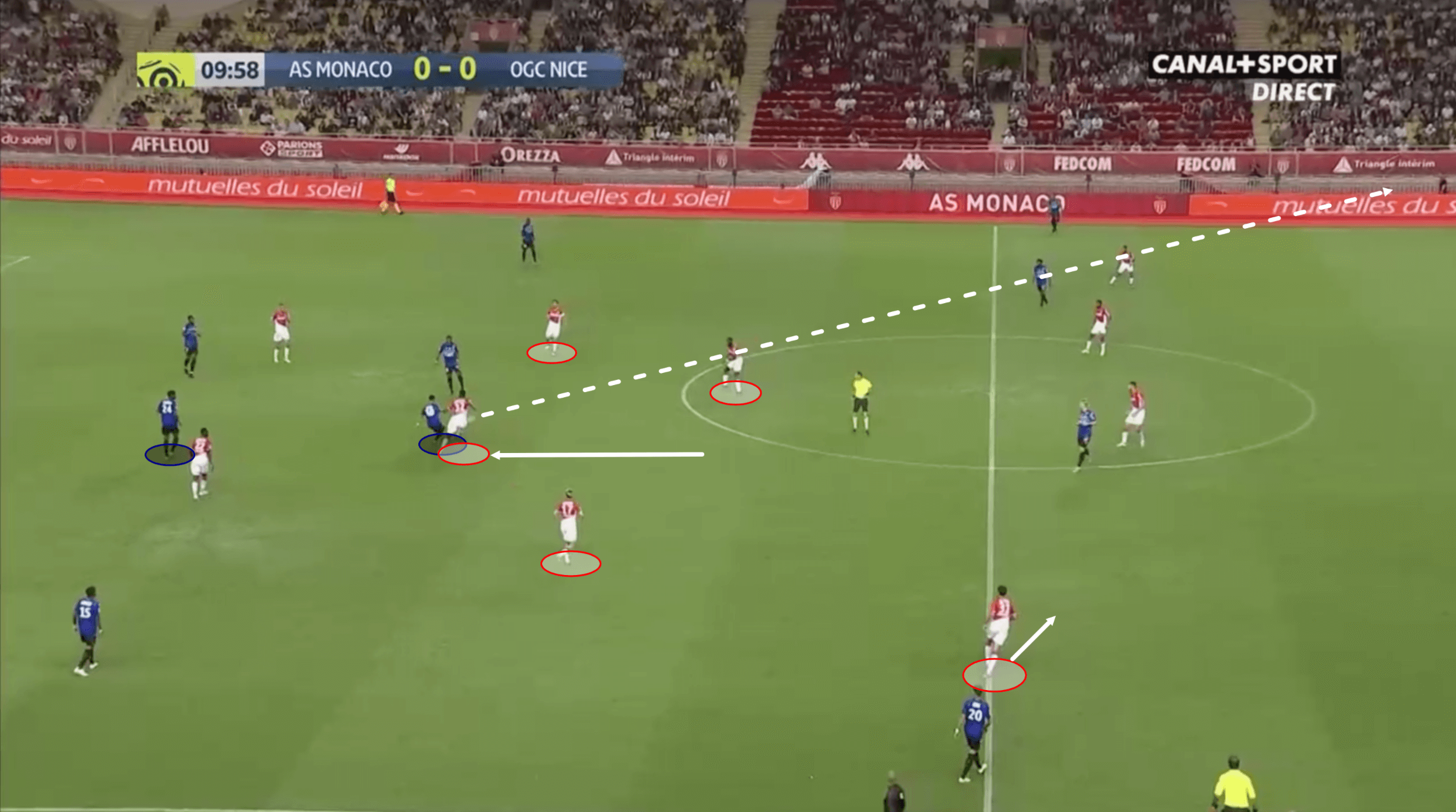
When Monaco’s press did successfully take away possession in Nice’s half- which occurred less often- Monaco would initiate quick switches of play, often from the left side of the pitch over to Gelson Martins on the right. This would turn out to be an effective method to attack Nice.
Exploiting space
On the other side of the ball, Monaco’s press aided in their setup attacking phase. When Nice’s midfield was positioned further forward in an attempt to spread out the opposition and expand possession, Monaco’s attacking players were positioned in front of Nice’s back line. When Monaco were able to gain possession in these occurrences, Nice’s lack of a defensive presence in midfield between Ounas, Cyprien, and Adrien Tameze allowed these attackers to occupy and exploit the space between the lines.
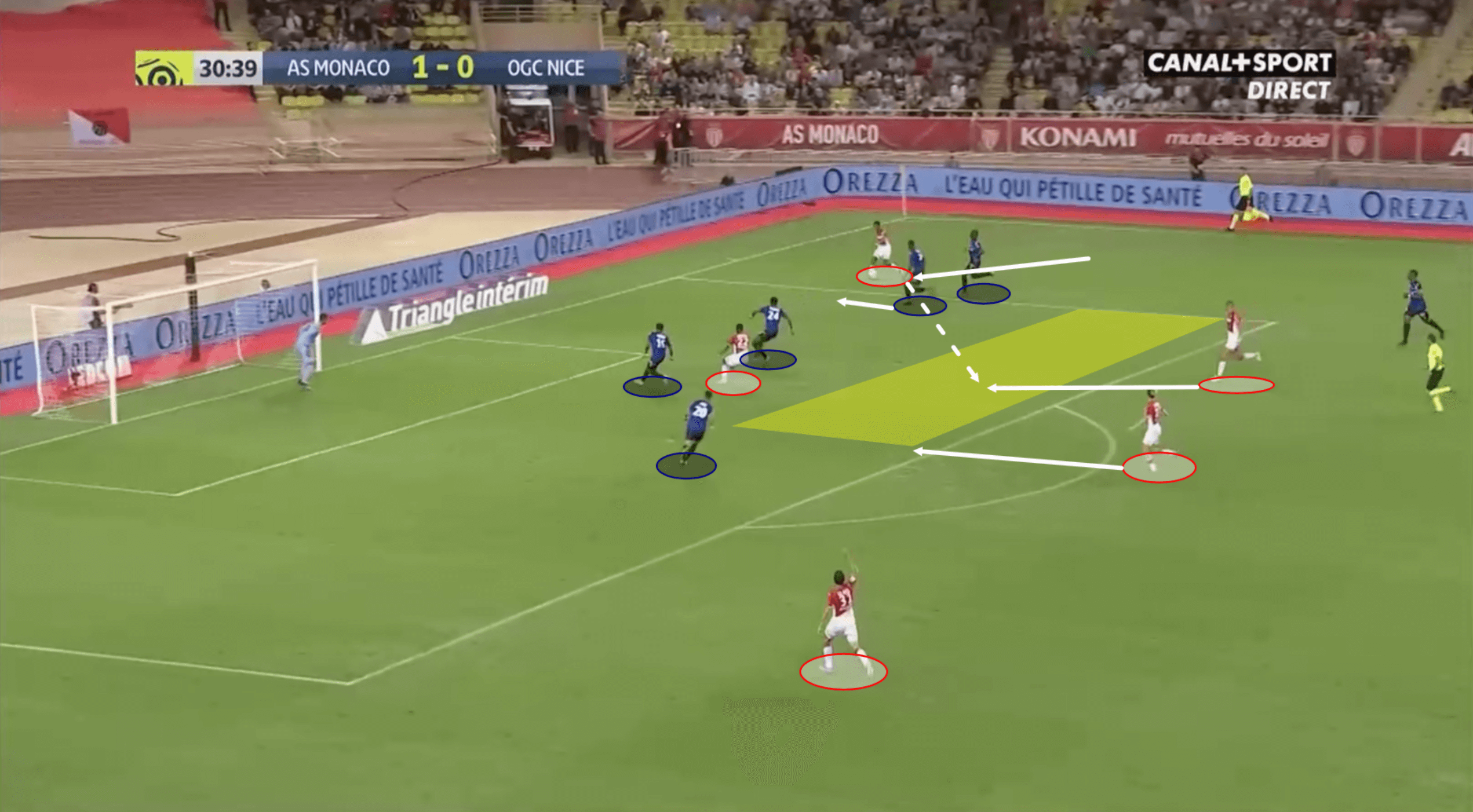
Not only did Aleksandr Golovin score the opening goal in a similar space, but there were numerous instances in which Monaco controlled the ball in this dangerous area. The poor organisation of Nice’s back line only contributed to Monaco’s exploitation of space.
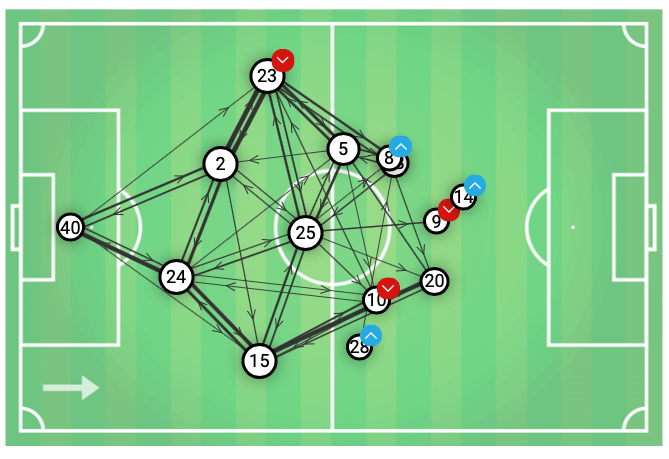
Nice’s pass map illustrates how the back line and midfield were rarely connected centrally. It also aids in explaining how Nice’s rare progressions took place in the wide areas.
With the lead, Monaco eased off the press. Rather unsurprisingly, this led to an increase in meaningful possessions by Nice, as they had more time and space to progress into and create with.
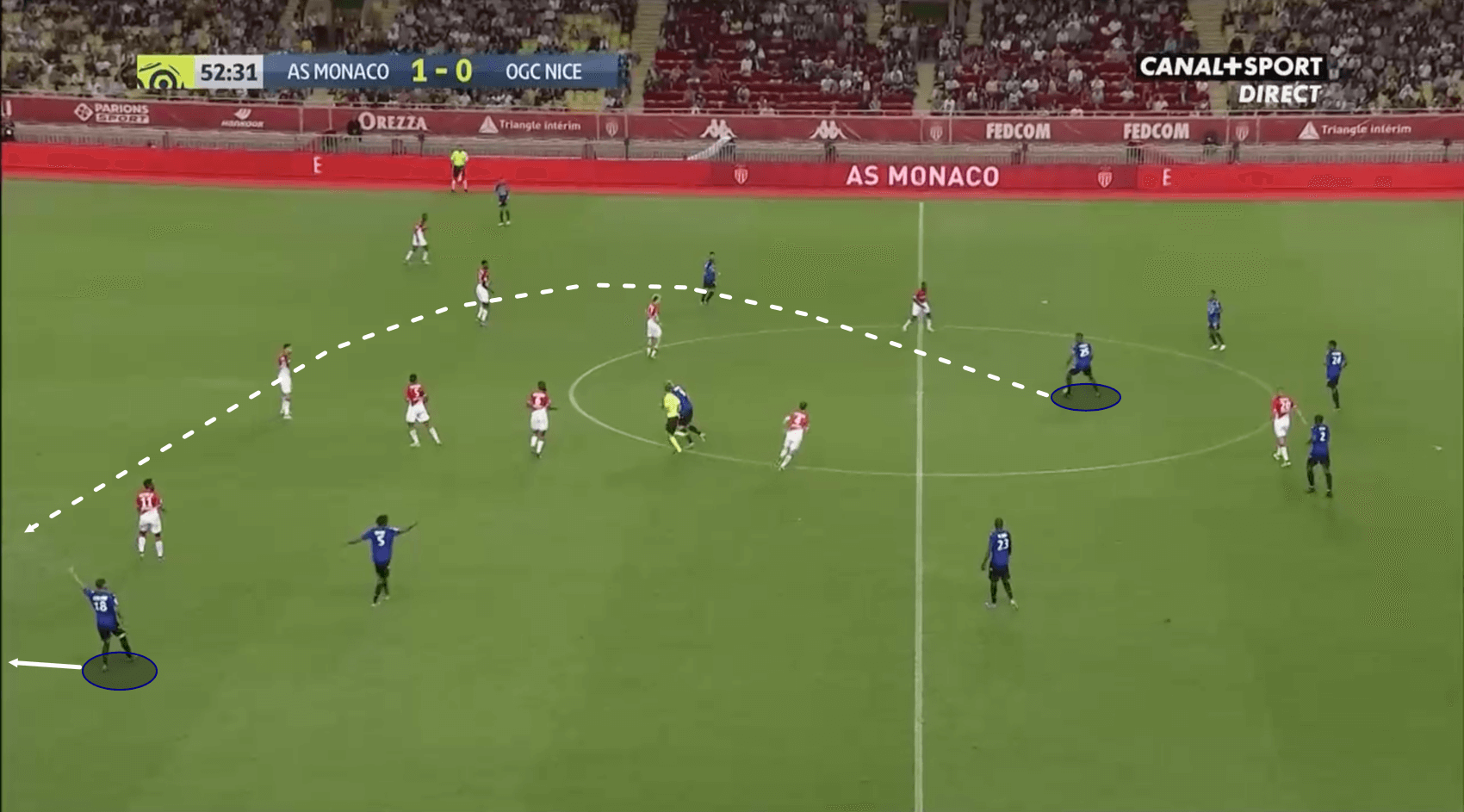
Nice eventually equalised off a set-piece which came as a result of the attack shown in the figure above. Monaco subsequently switched tactics again.
Return of the press
After the equaliser, Jardim ordered his players to return to the press. This once again is effective for Monaco, stifling Nice’s possession along the back line.
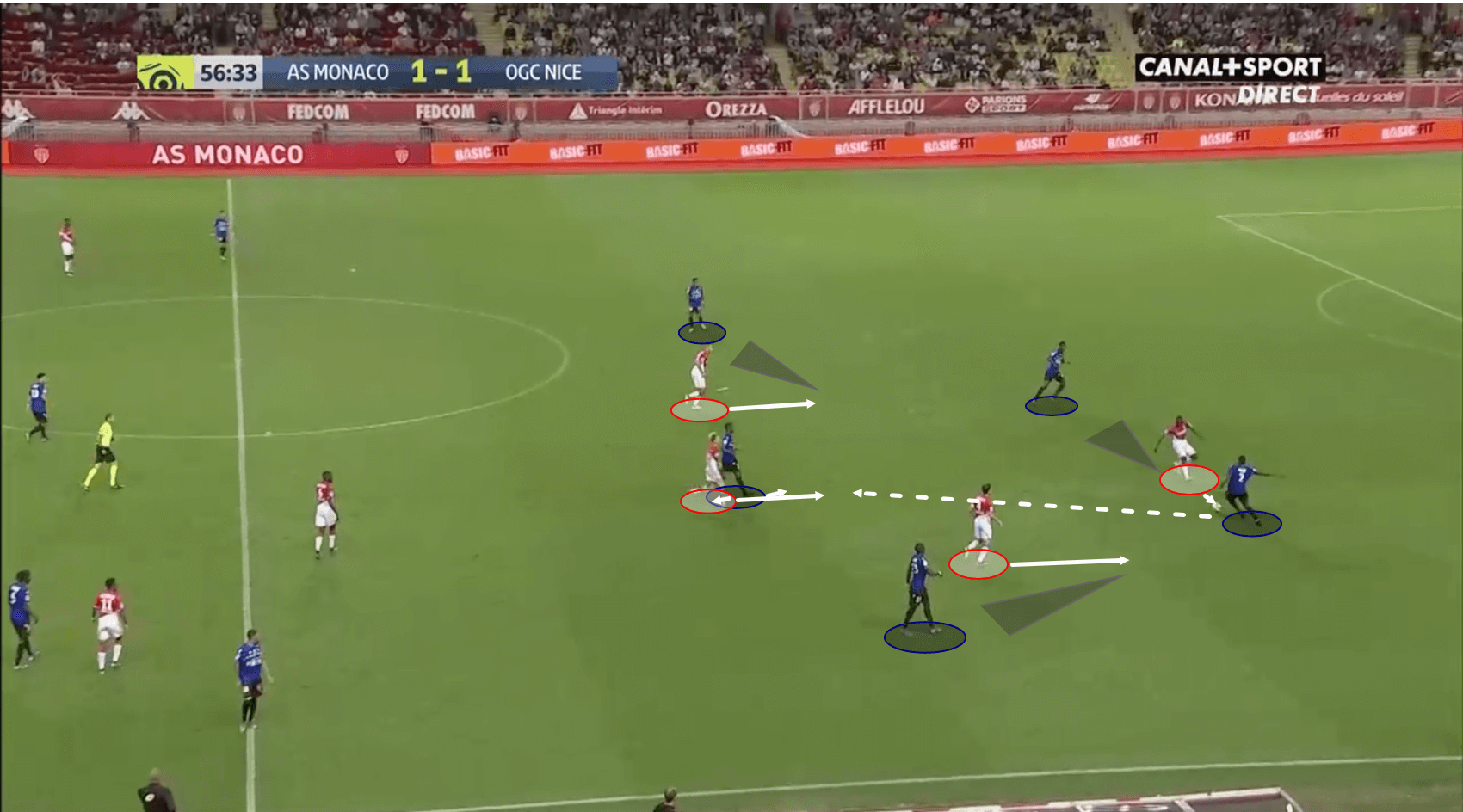
Utilising direct presses, cover shadows, and blocking passing lanes, Monaco’s second wave of pressing was arguably more successful than the first, possibly due to the physical toll the match was putting on Nice. The visitors totalled three yellow cards and two injuries throughout the match.
After regaining possession, Monaco yet again found themselves with space to exploit, in part thanks to Nice’s urgency to return an attack. The back line again lacked organisation, and Monaco took advantage.
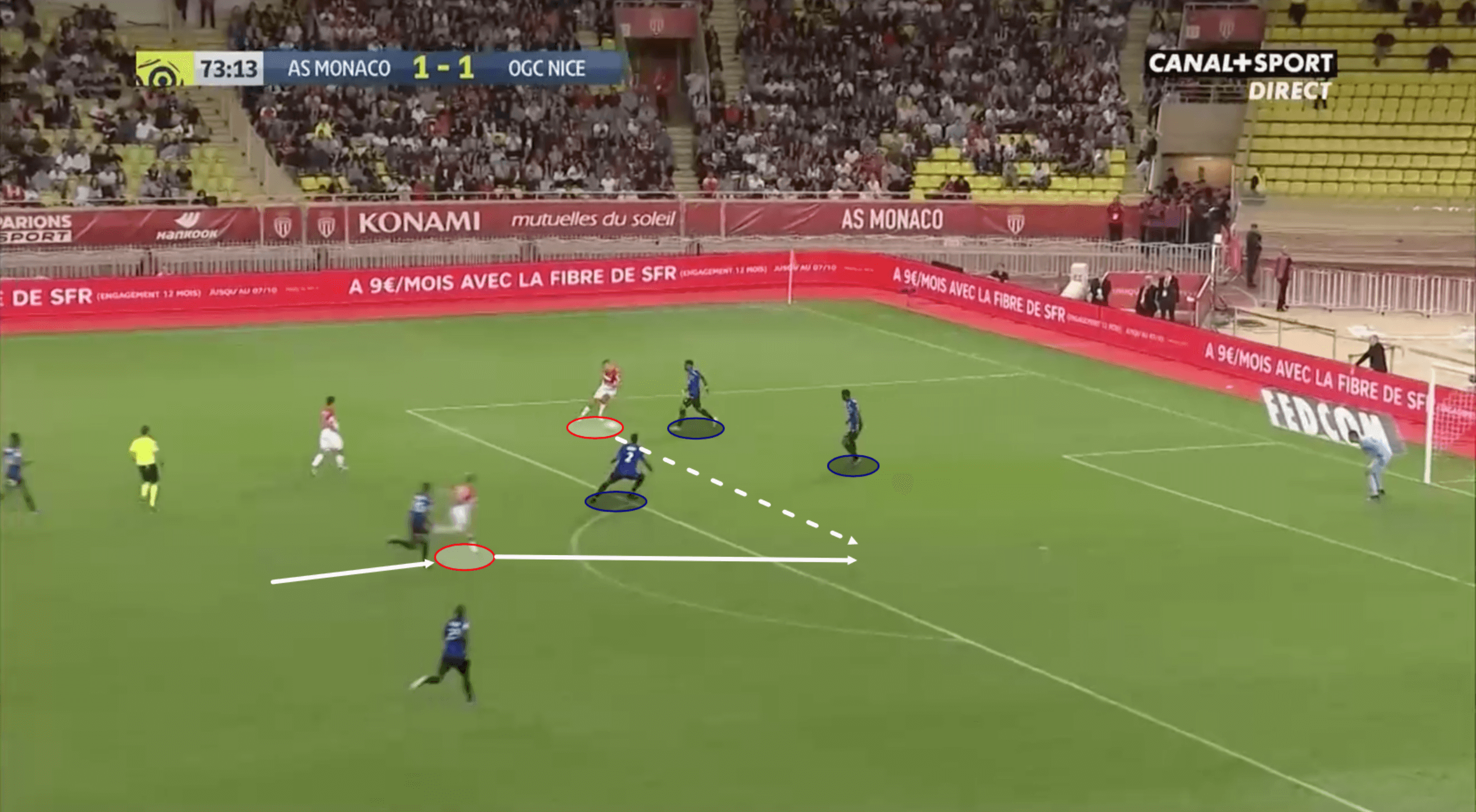
Monaco’s counter-attacks were quick and precise, never allowing Nice’s back line to reorganise.
Following surges of successful attacks by Monaco, the hosts were able to see out the last remaining minutes, utilising a strong central defensive block built up of Tiemoué Bakayoko, Cesc Fàbregas, and Golovin in front of the centre-backs.
Lastly, while writing this match analysis, I noticed two statistical anomalies.
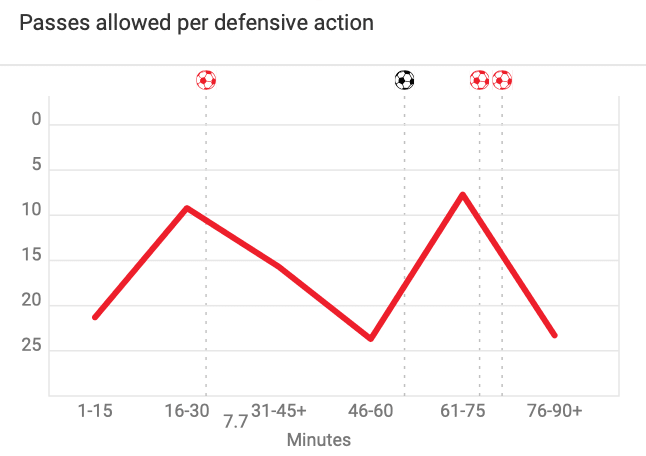
The first is rather simple: possession. Despite Nice’s dominance in possession (61%), Monaco was not only far more assertive on the ball but also seemingly saw more possession in Nice’s defensive half than vice versa. This was largely due to Monaco’s press and Nice’s struggle to connect through or around it successfully. Possession, however, has long been exposed as a poor example of a performance indicator by itself. The second statistical abnormality is more complex. Passes allowed per defensive action (PPDA) are often consulted when looking for a press. Principally, a smaller PPDA indicates a more pressing side because fewer passes by the opposition were allowed. It was a surprise then to discover Monaco allowed 14.92 PPDA this match, while Nice only allowed 7.5. The cause behind this is likely the fluctuation of the press of Les Monégasques. These fluctuations, which occurred around the goals scored, are visible in the graph above.
Conclusion
While only one match, this strong result could be the first step in the right direction for Jardim and Monaco. The press had no problem disrupting Nice’s build-up, and the attack has proved early this season that it can be prolific. The individual quality and depth at the club are evident, and this match hinted at a potential for consistent tactical improvement.
OGC Nice, on the other hand, struggled to both attack and defend in a high-possession shape. If they want to continue to compete at the top of the Ligue 1 table, flexibility in tactics, particularly against the press, might be needed.





Comments